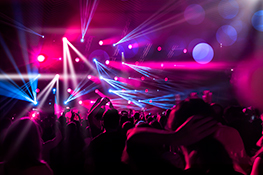Dynamic Backlighting with LED Strips: Transforming Stage Presence
LED strip lighting has revolutionized stage design, offering unparalleled flexibility and vibrant color options for creating stunning backdrops. Unlike traditional lighting, LED strips are incredibly versatile, allowing for precise control and intricate patterns that enhance the performance and captivate the audience. This article explores innovative ways to leverage LED strip lighting to achieve breathtaking stage effects.
Strategic Placement for Maximum Impact
The placement of LED strips is paramount to achieving the desired effect. Consider the following strategic placements:
- Behind the stage: Create an immersive environment by illuminating the background with washes of color or dynamic chases. Experiment with different diffusion techniques to soften or sharpen the light.
- Within stage risers: Integrate strips within risers to create eye-catching uplighting or accentuate specific areas of the stage. This is particularly effective for highlighting performers or key props.
- Along the stage floor: Use strips to delineate the stage space or to create a sense of depth and dimension. Programmable sequences can simulate moving light or even create the effect of a water feature.
- On set pieces: Embedding LED strips within set designs allows for subtle yet powerful illumination. This can dramatically alter the mood of a scene or highlight specific elements.
Color Mixing and Sequencing: Unleashing Creative Potential
The true magic of LED strips lies in their ability to generate a vast spectrum of colors and complex light sequences. Using DMX controllers, you can program sophisticated light shows that synchronize with music or enhance the narrative of the performance.
Exploring Dynamic Effects
- Color washes: Seamless transitions between colors create an atmospheric and captivating backdrop.
- Chasing effects: Moving patterns of light add dynamism and visual interest. Experiment with speed and pattern variations.
- Strobe effects: Carefully used strobes can emphasize dramatic moments, but overuse can be jarring. Find the right balance for your production.
- Pixel mapping: Control individual LEDs for precise light manipulation, enabling intricate designs and animations.
Choosing the Right LEDs for Your Stage
The type of LED strip you select will significantly influence the final effect. Consider these factors:
- Brightness (lumens): Ensure the strips provide adequate brightness for your venue size and intended use.
- Color temperature (Kelvin): Choose a color temperature that complements your overall stage design and aesthetic.
- IP rating: If using the strips outdoors or in damp environments, an appropriate IP rating is essential to protect against water damage.
- Addressability: For complex effects and pixel mapping, choose addressable LEDs (like WS2812B) for precise control.
Integrating LED Strip Lighting with Other Stage Equipment
To achieve a cohesive and impactful lighting design, consider integrating LED strips with other stage lighting equipment. For instance, combine LED strips with spotlights, moving heads, and fog machines for layered and immersive effects. The possibilities are practically limitless.
Conclusion: Elevate Your Stage with LED Strip Lighting
LED strip lighting provides a cost-effective and incredibly versatile solution for creating dynamic and captivating stage effects. By carefully considering placement, color sequencing, and integrating them with other lighting elements, you can transform your stage into a breathtaking spectacle. Experiment, innovate, and let your creativity shine!


 Auditorium Construction Services
Auditorium Construction Services 